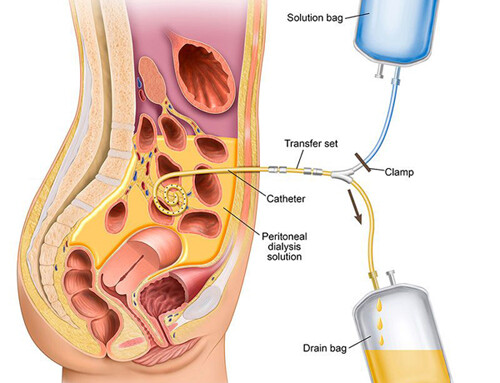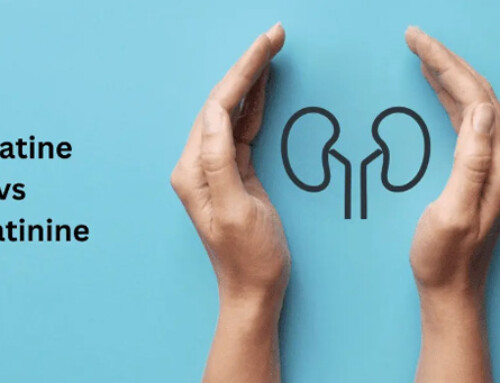Table of Contents
How do we decide the treatment time or duration of dialysis?
How do we assess if a patient is getting sufficient dialysis?
Dialysis adequacy refers to the clearance of uremic toxins. Although we use BUN, creatinine and eGFR to assess the degree of kidney function, we don’t use these parameters to assess the adequacy of dialysis. BUN is also dependent on nutritional status and creatinine is dependent on muscle mass. Relatively low levels (for a dialysis patient) may indicate poor nutrition and muscle mass as opposed to sufficient dialysis.
This article will give 2 perspectives:
- Urea kinetics – which is an assessment or the removal of uremic toxins
- Big picture
You should know urea kinetics because this is what is monitored and this determines the minimal acceptable amount of dialysis. However, I am a proponent of the big picture.
Big picture is this. Longer treatment times are better. How long? Based on what we know, 4 hours. I believe for chronic dialysis 4 hours should be the minimum treatment time. Thing is, most patients want shorter treatments. More on that below.
Ok, if all you want is the big picture you can stop reading now. If you want to know more read on. (Let me know when you stop reading, Brian@BCNephro.com. It will help me learn when and where I’m getting too detailed and need to stop.
Urea Kinetics
Traditional chronic dialysis is 3 days a week. Other factors that are prescribed include:
- Time (duration) of dialysis
- Blood flow rate
- Dialysis flow rate?
Dialysis removes things that we don’t measure (or maybe don’t even know about) and undoubtedly removal of some of these things is important. What is measured is urea clearance. This is a marker for the clearance of small molecules.
There are 2 ways this is routinely done in outpatient dialysis:
- Kt/V
- Urea Reduction Ratio (URR)
Kt/V
This is a complex formula (that the lab does for you):
Kt/V = -ln((BUN post dialysis / BUN pre dialysis) – (0.008 * Hours)) + ((4 – (3.5 * BUN post dialysis / BUN pre dialysis)) * UF volume / Weight post dialysis)
Yep, don’t bother trying to do that one. I just trust that the lab (or the computer) knows what it’s doing.
This is more accurate because it calculates for both the urea removed by dialytic clearance and ultrafiltration.
Here’s what it is:
K – Dialyzer clearance: This is dependent on the characteristics of the dialyzer.
T – Time: This is the time / duration of the dialysis treatment.
V – Volume of distribution of urea: (This is dependent on the size of the patient). It is approximately the patient’s total body water (corrected for ultrafiltration)
What to know about Kt/V:
- Target: 1.2-1.4. (Aim for 1.4 to ensure meet 1.2 minimum).
- Retrospective analysis that a Kt/V > 1.2 is associated with improved survival.
- Study targeting Kt/V > 1.4 did not improve outcomes. HEMO Study.
Urea Reduction Ratio (URR)
This is a simpler way.
URR = (1 – [post dialysis BUN ÷ pre dialysis BUN]) x 100
It is the percent that a single dialysis session reduces the blood urea concentration by. It is less accurate than the Kt/V because it does not account for urea removed by ultrafiltration.
What to know about URR:
- Minimum Target 65% (Aim for 70% to ensure meet 65% target)
These kinetics are not measured every treatment, they are measured once a month. Factors such as shortened treatment times and lower than prescribed blood flow (from access or catheter problems) can result in lower actual kinetics during other treatments.
Regarding dialysis adequacy you get the most bang for your buck by increasing dialysis time, then blood flow rate. Lesser impact by increasing dialysis flow rate and dialyzer size.
Big Picture
Unfortunately, good urea kinetics can be used to justify shorter dialysis treatment times. I believe it is important to consider other factors when assessing the adequacy of dialysis.
- Volume status and Blood Pressure. Fluid can be only removed at a certain rate without causing problems. It is recommended to keep the hourly UF rate to < 13 ml/kg/hr. In general if you need a UF rate of > 1L/hr this is problematic and a longer treatment time is warranted.
- BUN and creatinine. I told you that these are not used to assess adequacy of dialysis, But there are some levels that are suggestive of under dialysis. If the BUN is > 100 or creatinine is > 12 I am concerned about under dialysis regardless of kinetics.
- Metabolic factors. If the potassium or phosphorus are uncontrolled, it doesn’t make sense to have a shorter treatment time.
- How the patient feels. If the patient feels poorly with weakness, malaise and a poor appetite this may be a symptom of under dialysis.
Dialysis Time
I am a proponent of longer dialysis treatment duration. I believe longer dialysis treatment time is better for the patient. There is data to suggest this.
- This study compared 6 vs 3 day a week dialysis. Total weekly treatment time was 12.7 vs 10.4 hours.
- Here they compared extended (nocturnal) to conventional dialysis. Average treatment times were 399 vs 211 minutes.
- This analysis looked at mortality in patients who initiated dialysis with treatment times of 3 vs > 4 hrs.
- If that’s not enough they compared mortality in matched patients with treatment times less than and greater than 4 hrs.
My interpretation is that 4 (or more) hours is better than less than 4 hours regardless of adequacy as assessed by urea kinetics. Many patients want and request shortening of their prescribed dialysis duration. I am clear with them that I believe this may be associated with a higher mortality.
Summary
Dialysis adequacy is assessed by urea kinetics. Achieving these kinetics should be considered as necessary, but not sufficient to provide optimal care. Other factors should be considered and a minimum dialysis time of 4 hours should be recommended.



